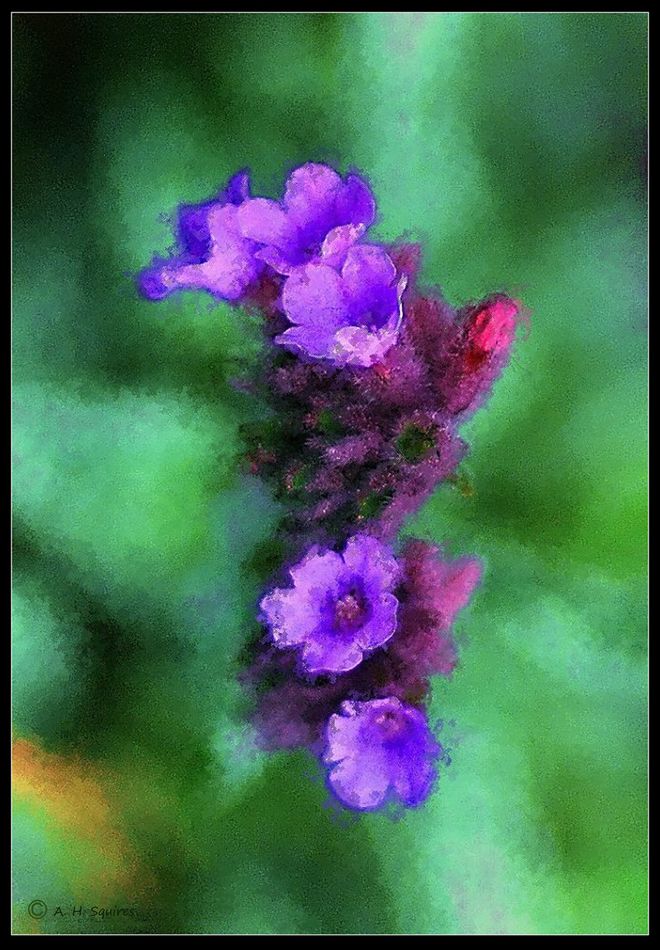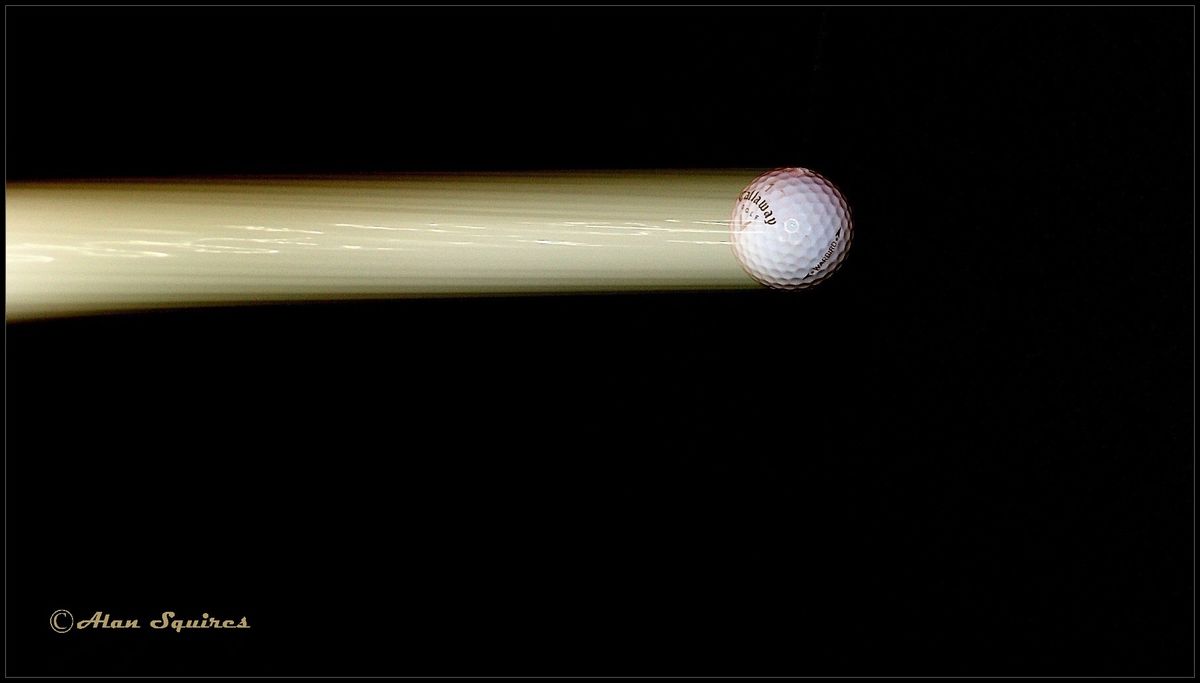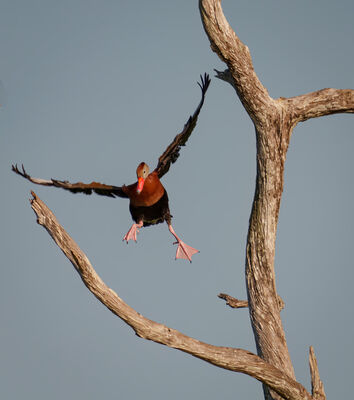Sharpness is Overrated -- Followup
Jun 17, 2022 10:53:16 #
User ID wrote:
Got it ... I think. So youve presented an example illustrating that "sharpness may be inappropriate". But OTOH "Sharpness is overrated" strikes me as an entirely different concept.
That....is also my opinion on the subject.
IMO, sharpness is a Feature... Not an Obligation.

Jun 17, 2022 10:53:56 #
I would say...
Sharpness is not overrated.
It is overused.
I hardly ever use it anymore...if I think it needs sharpening...I blew the shot.
Sharpness is not overrated.
It is overused.
I hardly ever use it anymore...if I think it needs sharpening...I blew the shot.
Jun 17, 2022 11:05:36 #
xt2
Loc: British Columbia, Canada
larryepage wrote:
Last week, Mac started a discussion around the not... (show quote)
Every current camera of any value enjoys more sharpness than required…not much to discuss. Cheers!
Jun 17, 2022 11:18:34 #
larryepage
Loc: North Texas area
xt2 wrote:
Every current camera of any value enjoys more sharpness than required…not much to discuss. Cheers!
Yes. Sometimes it is desirable...ir even necessary, such as when documenting complex images. The discussion has been the current trend of placing the quest for absolute sharpness at the top of the list of concerns in evaluating photographs.
I recall when HDTV was a new thing...the standard was to show every facial pore and every individual hair when portraying people. Fortunately that has passed, and no longer do videographers do it "just because they can."
Jun 17, 2022 12:45:50 #
If that train was going 70 Mph, all the people standing there taking pictures are idiots.
There is such a thing as using your head. Safety is the most important aspect of any undertaking.That is just how I feel.
WJH
There is such a thing as using your head. Safety is the most important aspect of any undertaking.That is just how I feel.
WJH
Jun 17, 2022 12:49:35 #
larryepage
Loc: North Texas area
williejoha wrote:
If that train was going 70 Mph, all the people standing there taking pictures are idiots.
There is such a thing as using your head. Safety is the most important aspect of any undertaking.That is just how I feel.
WJH
There is such a thing as using your head. Safety is the most important aspect of any undertaking.That is just how I feel.
WJH
Well, that was my whole point...
Jun 17, 2022 14:09:15 #
Canisdirus wrote:
I would say...
Sharpness is not overrated.
It is overused.
I hardly ever use it anymore...if I think it needs sharpening...I blew the shot.
Sharpness is not overrated.
It is overused.
I hardly ever use it anymore...if I think it needs sharpening...I blew the shot.
Just quit completely.
Jun 17, 2022 14:12:25 #
larryepage wrote:
Yes. Sometimes it is desirable...ir even necessary, such as when documenting complex images. The discussion has been the current trend of placing the quest for absolute sharpness at the top of the list of concerns in evaluating photographs.
I recall when HDTV was a new thing...the standard was to show every facial pore and every individual hair when portraying people. Fortunately that has passed, and no longer do videographers do it "just because they can."
I recall when HDTV was a new thing...the standard was to show every facial pore and every individual hair when portraying people. Fortunately that has passed, and no longer do videographers do it "just because they can."
Maybe someday the biffers will catch on.
Jun 17, 2022 14:39:40 #
Every creative visual process is comprised of a vast array if techniques which, if mastered can contribute to the expressiveness of the medium in general, and to our individual ability to express ourselves through that medium.
The better we get at the technical side of things, the easier it is to use whatever technique is most helpful in Expressing what we want to express.
Sharpness in a photograph is neither good or bad, it is just one (of a whole bunch of properties) that can be used to help express our vision.
Techniques, should never be ends in themselves, no amount of technique alone will make a great photograph, we learn and practice them to increase our visual vocabulary inn order to make more expressive photographs.
Understanding controlled motion blur is also just another technique, like saturation or desaturation or any of dozens of others. So it really makes no sense to speak about a technique/ lens property like sharpness as being "over or under rated". We can however ask if we as photographers had the skill to use whatever techniques necessary to make a good photograph.
If the Photograph is good, no one ever really cares about the techniques and cameras involved (beyond mild technical curiosity)
The better we get at the technical side of things, the easier it is to use whatever technique is most helpful in Expressing what we want to express.
Sharpness in a photograph is neither good or bad, it is just one (of a whole bunch of properties) that can be used to help express our vision.
Techniques, should never be ends in themselves, no amount of technique alone will make a great photograph, we learn and practice them to increase our visual vocabulary inn order to make more expressive photographs.
Understanding controlled motion blur is also just another technique, like saturation or desaturation or any of dozens of others. So it really makes no sense to speak about a technique/ lens property like sharpness as being "over or under rated". We can however ask if we as photographers had the skill to use whatever techniques necessary to make a good photograph.
If the Photograph is good, no one ever really cares about the techniques and cameras involved (beyond mild technical curiosity)
Jun 17, 2022 14:45:37 #
There are styles, milieus, trends, traditions, schools of thought, and endless photography approaches to photography Perhas each of us has our own concepts, unique style, or preferences regarding sharpness and softness.
For my personal work, I have my own preferences but as a commercial photograher, I do not always have the privilege or pleasure of doing things exactly as I prefer. I need to be flexible and have a very versatile "toolbox' both in style and the necessary equipment. Some days are routine and some days are surprises, challenges and learning experiences.
I work at the pleased with my clients; art directors, advertising agency account executives, individuals small business folks, government departments, people, etc., etc. etc.! Some of the folks know exactly what they want and know it can be done, some have an idea but they don't know how to express it- technically, Some, my favourite kids, too the job in my lap and let me do whatever I find appropriate. Some folks simply do not know what is talking about and I have to patiently educate them and come up with a solution.
Soft. in between or sharp? I have had clients tell me that they want their images so sharp that they can see the dust on the item I am shooting. I have to remind the. that I will usually clean off the dust, fingermarks, and smudges before I shoot so as not to waste their time looking for these telltale artifacts. The other will say things like "aetherial, fuzzy, romantic, like a Degas painting, misty, mushy".
So, to pull these things off, I need to know the methodologies to apply - ones that are based on solid theory. Some experimentation is allowable but there are deadlines and budgets to conform to.
Where sharpness is required one must know one's lens performances, ideal apertures, avoidance of diffraction, flare abatement, shutter speed management, camera support equipment and techniques and where motion needs to be "frozen, the correct shutter speed needs to be applied as to the distance for the subject and the director of the subject motion in relation to the sensor plane of the camera. ISO choice asper noise is also a factor to consider so in all cases, good compromises need to be made. Lighting and contrast are other considerations. Understanding depth of field, hyperfocal distance and "acceptable sharpness" is extremely important as well.
Where softness is in order one should consider the use of soft-focus prime lenses, high-quality diffusion filters, selective focus, "bokeh", and lighing concepts for soft-focus optics which are specialized. One needs to understand that soft-focus is NOT out of focus, muddy images due to poor contrast management or flat lighting.
Motion blur can be tricky but again, shutter speed management as to the direction of the motion and the camer/subject AND the rate of magnification will help solve many issues. Zoom blur is easy to do with a hitch.
Many of the aforementioned effects, soft and sharp, can be enhanced and/or simulated in post-processing. It's COOL if you can do them all SOOTC but that is not always possible. Too much sharpening to the extent of "outlining the subject looks artificial- just a touch will help. Diffusion and motion blue can be applied in the post but it requires patience and skill for it to look "real"!
My favourite "funny" requs was from one of my industrial clients who specializes in "Waste Management".They were preparing a prospectus brochure to distribute to municipalities across Canada for their recycling, waste collection and environmental services. Their art director called and said he need a sexy shot of a GARBAGE TRUCK! I asked him to tell me someof the "buzz words" in the copy or the. He said "prompt fast pickups, latest environment' technology, no job too big or small, etc, specializing in urban requirements". 20 shots with a zoom lens- this was their pick!
For my personal work, I have my own preferences but as a commercial photograher, I do not always have the privilege or pleasure of doing things exactly as I prefer. I need to be flexible and have a very versatile "toolbox' both in style and the necessary equipment. Some days are routine and some days are surprises, challenges and learning experiences.
I work at the pleased with my clients; art directors, advertising agency account executives, individuals small business folks, government departments, people, etc., etc. etc.! Some of the folks know exactly what they want and know it can be done, some have an idea but they don't know how to express it- technically, Some, my favourite kids, too the job in my lap and let me do whatever I find appropriate. Some folks simply do not know what is talking about and I have to patiently educate them and come up with a solution.
Soft. in between or sharp? I have had clients tell me that they want their images so sharp that they can see the dust on the item I am shooting. I have to remind the. that I will usually clean off the dust, fingermarks, and smudges before I shoot so as not to waste their time looking for these telltale artifacts. The other will say things like "aetherial, fuzzy, romantic, like a Degas painting, misty, mushy".
So, to pull these things off, I need to know the methodologies to apply - ones that are based on solid theory. Some experimentation is allowable but there are deadlines and budgets to conform to.
Where sharpness is required one must know one's lens performances, ideal apertures, avoidance of diffraction, flare abatement, shutter speed management, camera support equipment and techniques and where motion needs to be "frozen, the correct shutter speed needs to be applied as to the distance for the subject and the director of the subject motion in relation to the sensor plane of the camera. ISO choice asper noise is also a factor to consider so in all cases, good compromises need to be made. Lighting and contrast are other considerations. Understanding depth of field, hyperfocal distance and "acceptable sharpness" is extremely important as well.
Where softness is in order one should consider the use of soft-focus prime lenses, high-quality diffusion filters, selective focus, "bokeh", and lighing concepts for soft-focus optics which are specialized. One needs to understand that soft-focus is NOT out of focus, muddy images due to poor contrast management or flat lighting.
Motion blur can be tricky but again, shutter speed management as to the direction of the motion and the camer/subject AND the rate of magnification will help solve many issues. Zoom blur is easy to do with a hitch.
Many of the aforementioned effects, soft and sharp, can be enhanced and/or simulated in post-processing. It's COOL if you can do them all SOOTC but that is not always possible. Too much sharpening to the extent of "outlining the subject looks artificial- just a touch will help. Diffusion and motion blue can be applied in the post but it requires patience and skill for it to look "real"!
My favourite "funny" requs was from one of my industrial clients who specializes in "Waste Management".They were preparing a prospectus brochure to distribute to municipalities across Canada for their recycling, waste collection and environmental services. Their art director called and said he need a sexy shot of a GARBAGE TRUCK! I asked him to tell me someof the "buzz words" in the copy or the. He said "prompt fast pickups, latest environment' technology, no job too big or small, etc, specializing in urban requirements". 20 shots with a zoom lens- this was their pick!

Jun 17, 2022 15:25:31 #
larryepage wrote:
Here is the example photograph that rekindled my t... (show quote)
Your photo of the train is sharp and I reckon it needs to be sharp if it's to be a documentary... it's that kind of photo.

However motion blur would add an extra dimension... Check out my golf ball

Mac, you make a good point vis a vis Impressionists imho.

Jun 17, 2022 15:27:12 #
larryepage
Loc: North Texas area
E.L.. Shapiro wrote:
There are styles, milieus, trends, traditions, sch... (show quote)
Thank you, Ed, for your thoughtful reply. And MJPerini, thanks to you as well. **Edit--Thanks also to Abo for your comments.**
You've probably detected that I've been thinking quite a bit about this topic since Mac originally introduced it. It has not yet caused me to lose sleep, but it has been following me around pretty closely since I read his initial post. I was quite disappointed to discover that I had miscalculated my shutter speed for the image posted. 70 mph is about 112 feet per second, so the train should have travelled about 3-3/8 inches during the exposure. Even if I was off by a factor of 50%, there should be some sort of a noticeable effect. Oh, well. Someday there will be another opportunity.
Earlier that day, our group had been riding on Amtrak. Passenger trains and priority freight trains (you will notice that my picture was of an automobile train) operate at the same speeds on this line, which is intended to be 70 mph. With this discussion in mind, I took opportunity to take some quick shots out the window just to see what would result and work on some technique. Neither of these images is intended to be anything of particular significance...just a couple of exercises to see what would happen. You will note that there is about a three stop difference in exposure from the locomotive picture. I took two stops in shutter speed (1/100 instead of 1/400) and another in aperture (f/7.1 instead of f/10). This is because I was shooting through the heavily tinted window of the passenger car. At 1/100 second, I'd expect that I travelled about a foot while the shutter was open. I probably wouldn't have wanted that much movement in the train picture, but I think the effect here is actually pretty nice and very effectively communicates movement...movement at significant speed. Notice the big difference in effect, though, between the ties at the left side of the image, where the motion is more at an angle to my position, compared to the effect at the right side, where the movement is much more directly crosswise to me.
I am aware of the difference in selection and use of diffused focus versus lack of sharpness caused by motion of the camera or subject. I think both are important parts of the discussion here, and the latter case just happens to be what I'm personally looking at right now.
Jun 17, 2022 15:29:04 #
E.L.. Shapiro wrote:
There are styles, milieus, trends, traditions, sch... (show quote)
I'm not sure that's the right "dynamic" for a garbage truck... perhaps that's how a wino
that's drank too much turps sees it... LOL or did your client drop too much acid in the 70s?
Jun 17, 2022 15:39:12 #
bikinkawboy
Loc: north central Missouri
A sexy garbage truck...ha! Kind of like a speeding turtle or a relaxed squirrel. Words you normally wouldn’t see in the same sentence.
If you can make a garbage truck look sexy, I have an old grain truck I’d like you to turn into a babe magnet.
If you can make a garbage truck look sexy, I have an old grain truck I’d like you to turn into a babe magnet.
Jun 17, 2022 16:48:48 #
MJPerini wrote:
Every creative visual process is comprised of a va... (show quote)
Agree completely. Well said.
If you want to reply, then register here. Registration is free and your account is created instantly, so you can post right away.






